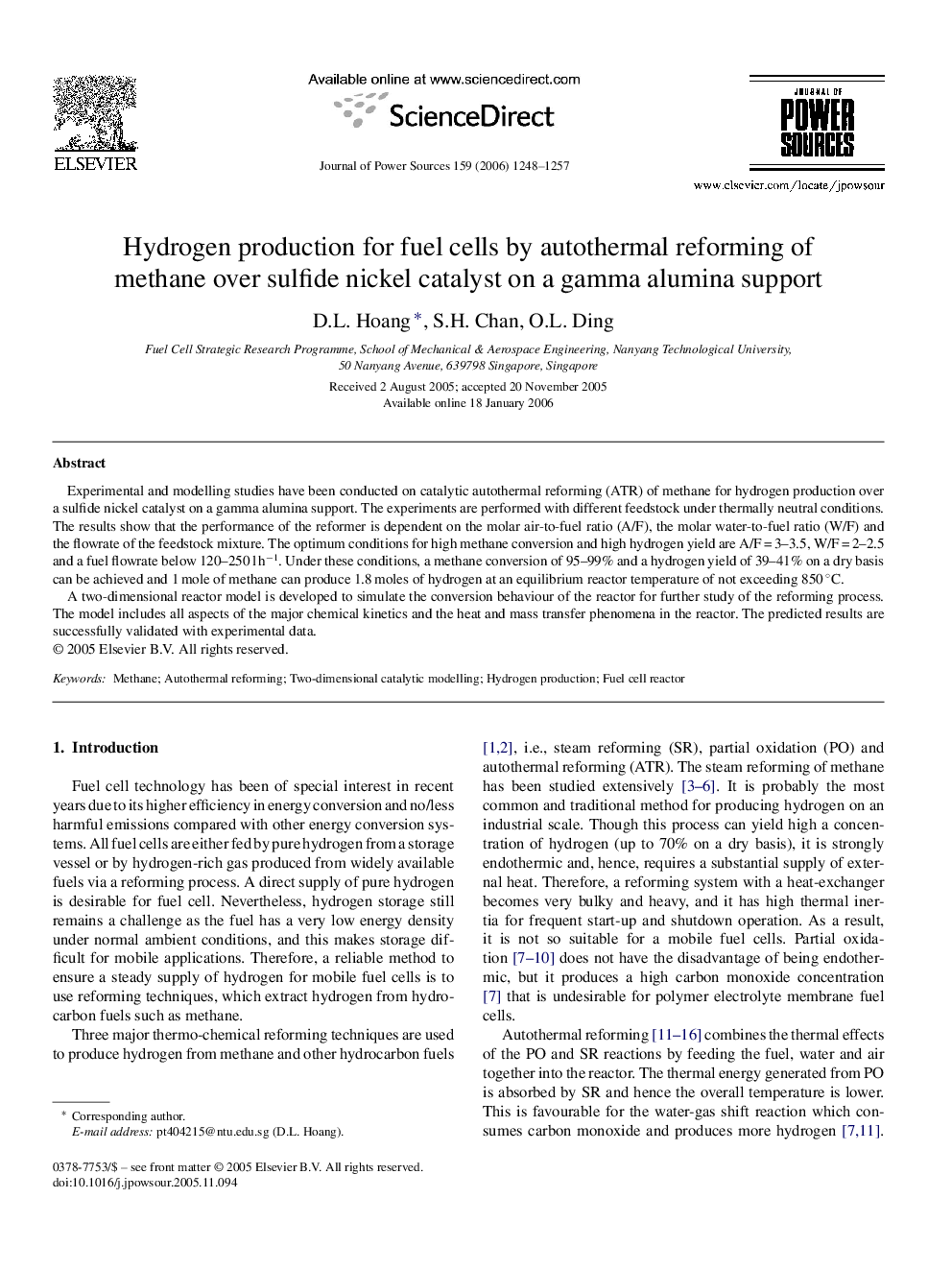| Article ID | Journal | Published Year | Pages | File Type |
|---|---|---|---|---|
| 1287281 | Journal of Power Sources | 2006 | 10 Pages |
Experimental and modelling studies have been conducted on catalytic autothermal reforming (ATR) of methane for hydrogen production over a sulfide nickel catalyst on a gamma alumina support. The experiments are performed with different feedstock under thermally neutral conditions. The results show that the performance of the reformer is dependent on the molar air-to-fuel ratio (A/F), the molar water-to-fuel ratio (W/F) and the flowrate of the feedstock mixture. The optimum conditions for high methane conversion and high hydrogen yield are A/F = 3–3.5, W/F = 2–2.5 and a fuel flowrate below 120–250 l h−1. Under these conditions, a methane conversion of 95–99% and a hydrogen yield of 39–41% on a dry basis can be achieved and 1 mole of methane can produce 1.8 moles of hydrogen at an equilibrium reactor temperature of not exceeding 850 °C.A two-dimensional reactor model is developed to simulate the conversion behaviour of the reactor for further study of the reforming process. The model includes all aspects of the major chemical kinetics and the heat and mass transfer phenomena in the reactor. The predicted results are successfully validated with experimental data.
